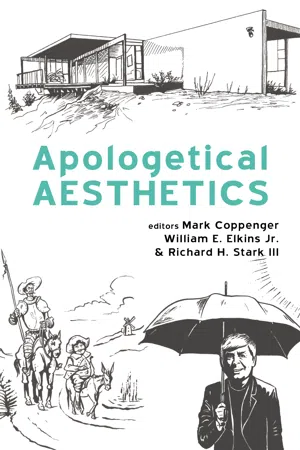![]()
Insight from and for the Arts
![]()
The Tension of Evil
A Problem to Be Resolved
Brian James Watson
If your life is anything like mine—and I suspect that it is—it is far from perfect. Yet even in our imperfect lives, there are times of relative peace and harmony. There are times when our health is adequate, we have enough money to pay our bills, our relationships are strong, and our life’s work is satisfying and meaningful. Yet there are also times when such relative peace is disturbed, when the harmony of our lives becomes discordant, when physical or emotional suffering introduces dissonance. Fortunately, there are also times when such problems are resolved, and we feel a great sense of relief. Strangely, that sense of relief may be enhanced because we have first suffered. Pain and suffering, when relieved, can make us appreciate what we so often take for granted.
Of course, many issues of pain and suffering do not resolve within this life. Loved ones die. Relationships are irrevocably broken. Those who commit atrocities are not always brought to justice. The process of aging robs us of much even before we reach the grave. Though we know such things are inevitable, we desire a different outcome. We long for a resolution to suffering that isn’t found in this life. We hope for a better world to come, a better ending to our stories, one in which there is peace and harmony.
That pattern of pain and resolution gives us some insight into the problem of evil, the subject of this chapter. Evil might be defined as anything that keeps the world from being what it ought to be, anything that causes pain and suffering, whether physical or psychological. Evil is a problem for everyone, particularly for those who believe in an all-powerful, all-knowing, benevolent, and loving God who created the universe and all that is within it. Often that problem is stated in the form of questions like these: If God has the power to do anything logically possible, if God knows that evil will occur and how to prevent evil before it happens (or how to stop it quickly after it occurs), and if God is good, why is there any evil in the world? Why is there so much evil in the world? Why is there such horrific and seemingly pointless evil in the world? Why did this evil happen to me?
While it may be impossible for finite human beings to answer those questions fully, many Christians have tried to explain why God would permit evil to occur. In the project of faith seeking understanding, Christians want to know why God would allow evil to occur and how they should respond to evil. Some might even question, given the reality of evil, if such a good and omnipotent God even exists. In fact, the problem of evil has been called “the rock of atheism.”
Most answers to the problem of evil claim that God has a good reason for allowing evil to occur: to bring about something valuable that wouldn’t otherwise be possible. According to Greg Welty, “[T]he pain and suffering in God’s world play a necessary role in bringing about greater goods that could not be brought about except for the presence of that pain and suffering. The world would be worse off without that pain and suffering, and so God is justified in pursuing the good by these means.” Such an explanation of evil is often called a greater good theodicy.
In this essay, I present a new theodicy. I believe that features of some of the arts, particularly music, can give us tremendous insights into the problem of evil. I contend that one of the reasons why God allows evil to occur is to produce a satisfying resolution at the end of history as we know it, the end of this age. In great pieces of music, composers introduce tension and dissonance in order to achieve a satisfying resolution. The denouement is deeply satisfying precisely because it was preceded by that tension and dissonance. Similarly, God has ordained tension and dissonance in the form of evil in order to achieve an eschatological world that is greater than any world that never had evil in it. My proposal is not very different from what the apostle Paul writes in 2 Corinthians 4:17: “For this light momentary affliction is preparing for us an eternal weight of glory beyond all comparison.” Or, in the words of Augustine, “In every case, the joy is greater, the worse the pain which has preceded it.”
A Word on Music
This chapter will focus primarily on an analogy from music. I realize that not all of us are musically literate, even if we enjoy listening to music. Since not all of us read music or have experience with musical theory, I will start with some basics. I ask the reader to persevere—reading about music theory might produce a light momentary affliction, but this information will prepare us for weightier matters. In this essay, I will introduce and develop various themes before tying them together into what I hope will be a satisfying conclusion.
Music is best thought of as a language. The music that we are most familiar with is tonal music. This is the language of classical music (which I shall call art music), folk music, and pop music. There are...
